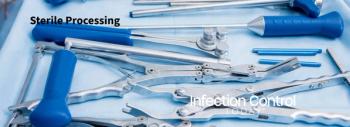
Health Care-Associated Burkholderia multivorans Infections Traced to Contaminated Ice Machines
Contaminated ice machines caused Burkholderia multivorans infections at hospitals in California and Colorado. Health officials recommend stopping ice machine use during clinical care to prevent further outbreaks.
This article first appeared in our sister publication
The CDC's Morbidity and Mortality Weekly Report reported that between 2021 and 2022, 23 cases of infections caused by Burkholderia multivorans (sequence type ST659) were reported at 2 hospitals in southern California, attributed to contaminated ice and water from these machines. To manage the outbreak, health officials advised stopping the use of ice and tap water during clinical care activities, and an investigation is underway to identify the sources of contamination in the ice machines.1
B multivorans is a gram-negative bacillus and part of the Burkholderia cepacia complex, known for causing opportunistic infections primarily in patients with cystic fibrosis, chronic granulomatous disease, and those who are immunocompromised. While central nervous system infections are rare, management is complicated by the bacterium's resistance to many antimicrobial agents.2
In addition to the 23 cases reported in southern California, this study identifies 23 previously unreported infections of B multivorans ST659 between 2020 and 2024. This includes 13 cases at a northern California hospital, 8 at a hospital in Colorado, and 2 more at one of the southern California hospitals. All 4 hospitals used the same brand of ice machines and similar filters, descaling, and sanitizing products. B multivorans was isolated from samples collected from ice machines in 2 of these hospitals.1
Hospital Case Reports
- Hospital A: Identified 13 cases of B multivorans ST659 between September 2020 and October 2021, with respiratory specimens as the source of infection in most patients.
- Hospital B: Reported 20 cases from August 2021 to July 2022, plus two additional cases from September 2022 to February 2023, with contamination found in ice and water samples from ice machines.
- Hospital C: Documented 3 cases between August 2021 and July 2022, but no B multivorans was isolated from ice machines, although 1 sample showed high bacterial levels.
- Hospital D: Identified 8 cases from April 2023 to February 2024, with B multivorans found in 6 of the 10 sampled ice machines during environmental testing.
According to the investigators, “The higher proportion of intra-abdominal specimens with B multivorans at hospital D is consistent with the observed practice at this hospital of directly applying refillable ice bags to abdominal surgical wounds and device insertion sites. High bacterial counts, such as that found in water samples from an ice machine at Hospital C, might also indicate risk of transmission of water-associated bacteria to patients.”1
Whole genome sequencing was performed to evaluate the genetic similarity of the isolates. The analysis showed that all clinical and ice machine isolates were highly similar, with only 0 to 14 single nucleotide variant differences across 81% of the selected reference genome.
This report 2 two key limitations: the descaling and sanitizing products tested may have been from different lots used during patient exposures. Second, patient medical records do not document specific exposures to tap water and ice, making it difficult to confirm when and how these exposures occurred.
The findings indicate that during outbreaks of water-related organisms in health care facilities, staff should refrain from using tap water, and ice and water from ice machines for patient care.
References
- Vazquez Deida AA, Spicer KB, McNamara KX, et al. Burkholderia multivorans Infections Associated with Use of Ice and Water from Ice Machines for Patient Care Activities―Four Hospitals, California and Colorado, 2020–2024. MMWR Morb Mortal Wkly Rep 2024;73:883–887. DOI:
http://dx.doi.org/10.15585/mmwr.mm7339a4 - Peralta DP, Chang AY, Ariza-Hutchinson A, Ho CA. Burkholderia multivorans: A rare yet emerging cause of bacterial meningitis. IDCases. 2018;11:61-63. Published 2018 Jan 9. Accessed October 9, 2024. doi:10.1016/j.idcr.2018.01.002
Newsletter
Stay prepared and protected with Infection Control Today's newsletter, delivering essential updates, best practices, and expert insights for infection preventionists.






